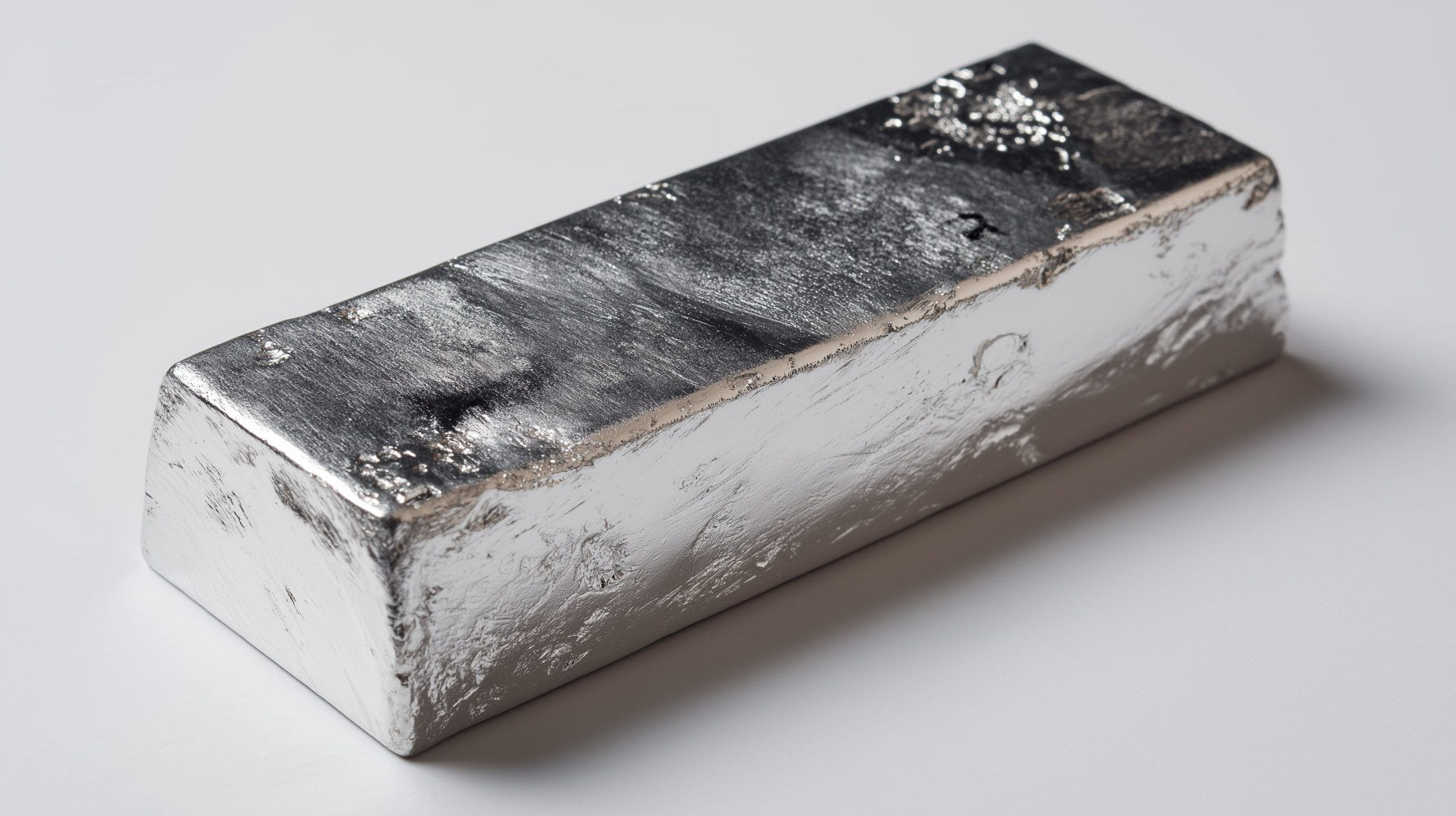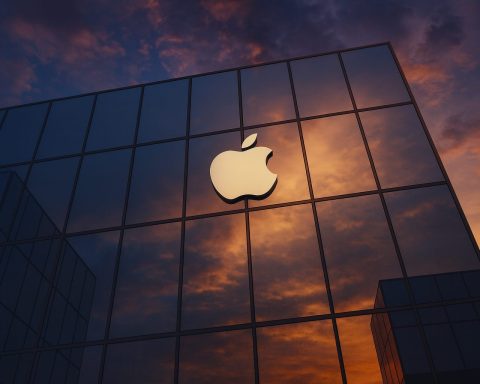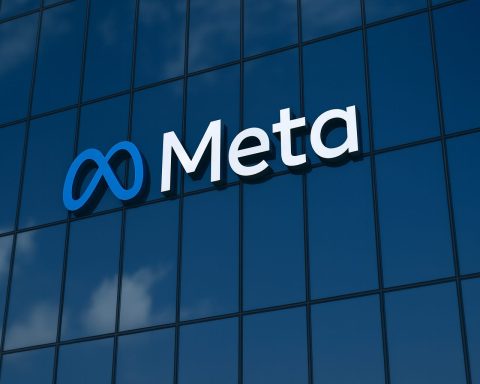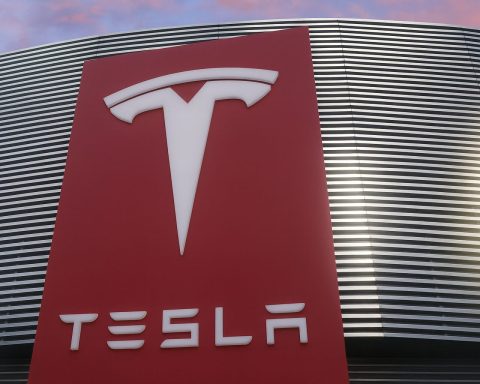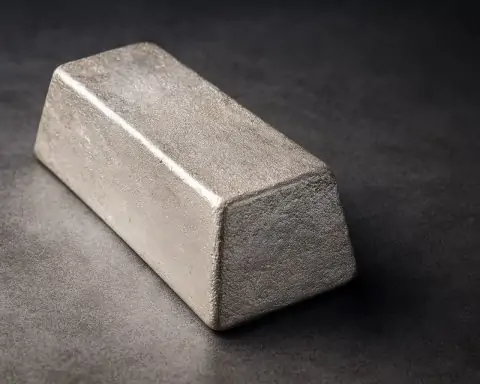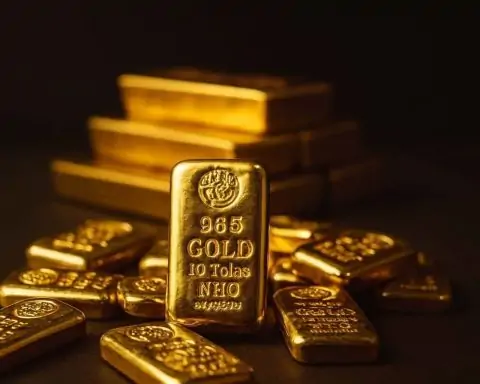Key Facts
- Gold Extends Record Rally: Gold prices surged on Friday, nearing all-time highs around $3,889 per ounce and clinching a seventh straight weekly gain [1] [2]. The metal is up over 3% this week and nearly 47% year-to-date, thriving on safe-haven demand as a U.S. government shutdown and prospects of Federal Reserve rate cuts boost its appeal [3].
- Silver at 14-Year High: Silver jumped more than 2% on Friday to about $48/oz – its highest level since 2011 – outperforming gold with roughly 65% YTD returns [4] [5]. The rally puts silver within striking distance of its 1980 record near $50, driven by both investor buying and booming industrial demand (e.g. solar panels).
- Platinum Surges, Palladium Lags:Platinum broke above $1,600/oz (a 12-year high) on supply crunches and robust auto and clean-energy demand [6]. It now trades about $330 higher per ounce than palladium, a dramatic reversal from recent years [7]. Palladium also rose to roughly $1,260/oz, but continues to lag amid softer demand from the shift to electric vehicles.
- Macro Turmoil Lifts Haven Assets: An ongoing U.S. government shutdown (now in its 3rd day) and a blackout of federal economic data have stoked uncertainty. With the crucial jobs report delayed, investors are leaning on alternate indicators that suggest a cooling economy [8] – pushing up expectations for imminent Fed rate cuts. Markets are pricing in a ~95% chance of a rate cut at the Fed’s October meeting [9], a bullish scenario for non-yielding assets like gold and silver.
- Central Banks & Analysts Bullish: Global central banks remain voracious gold buyers in 2025 – for a fourth consecutive year, they’re on track to be net purchasers [10]. Notably, China added 36 metric tons and Poland 67 tons of gold to reserves this year amid rising geopolitical tensions [11]. Major banks and analysts see more upside ahead: UBS now forecasts gold will climb to $4,200 in the coming months [12], and Wall Street strategists see little standing in the way of gold breaching the $4,000 mark in the near term.
Gold Near Record Highs Amid Safe-Haven Rush
Gold prices are flirting with record territory after an explosive rally in recent weeks. On October 3, the metal jumped about $30 to $3,889/oz, setting a fresh all-time high intraday [13] and capping seven consecutive weeks of gains. It briefly hit $3,896.49 the day before – a new record – and is now on track for its best annual performance since 1979 [14]. The yellow metal has soared approximately 48% year-to-date, vastly outperforming equities (the S&P 500 is up ~14% in 2025) [15].
Safe-haven demand has been the key driver. Investors are flocking to gold as political and economic uncertainty mounts. The U.S. government shutdown, which began October 1, is now several days old with no resolution in sight, raising fears of economic fallout. “I think the longer the government stays shut down, that’s going to be a steady bullish element for the gold market,” noted Jim Wyckoff, senior analyst at Kitco Metals [16]. He added that a surprise deal to end the impasse could spark a pullback, but so far no deal has materialized [17]. The shutdown has even “frozen” key economic data releases, including the closely watched nonfarm payrolls report that was due Friday [18]. With official data going dark, markets have had to rely on private indicators pointing to a cooling labor market. This backdrop of uncertainty is amplifying gold’s appeal as a store of value.
At the same time, interest rate expectations have shifted dramatically in gold’s favor. The absence of fresh data, combined with soft ISM service PMI readings and other signs of a slowdown, has traders betting the Fed will pivot to easing policy. According to the CME FedWatch tool, there is about a 95% probability the Fed will cut interest rates by 0.25% in October (and a strong likelihood of another cut in December) [19] [20]. Gold tends to thrive in lower-rate environments – not only does cheaper money weaken the dollar, but it also reduces the opportunity cost of holding non-yielding assets. “Political instability and doubts about Fed independence are driving a powerful flight-to-safety bid” in gold despite higher real interest rates, one market commentary noted [21]. In essence, investors are looking past the Fed’s recent rate hikes and positioning for an era of monetary easing, which has historically been rocket fuel for gold prices.
Geopolitical tensions are further undergirding gold’s run. From Europe to the Middle East, uncertainty abounds – factors like the ongoing conflict in Gaza and escalating great-power trade disputes have many investors seeking safety. Gold is viewed as the ultimate hedge against “stagflationary” conditions – a mix of high inflation and slow growth that some fear is brewing [22]. “A rise in inflation concurrent with a slowdown…signals we are increasingly flirting with a stagflationary environment,” the World Gold Council observed, highlighting gold’s strong performance in such periods [23]. Central banks certainly seem to agree (as detailed below, they have been stockpiling bullion at a near-record pace). All these factors have made gold “the alternative to the dollar” in 2025, according to GraniteShares’ Will Rhind, who notes that even with real yields up, gold is behaving like a safe-haven substitute for stocks and bonds in the face of ballooning U.S. debt and deficits [24].
Silver Hits Multi-Year High, Outshining Gold
Silver has been on a tear of its own – in fact, by some measures the white metal is outperforming its golden counterpart. Prices for silver pushed above $47–48/oz at week’s end, marking a 14-year high (the highest since 2011) [25] [26]. Silver added over $1 on Friday alone, a ~2.1% daily jump, and is up ~17% in just the past month [27]. Year-to-date, silver has now rallied about 65% [28] – vaulting from roughly $29 in January to just shy of $48 – which edges out gold’s ~47% gain over the same period. By closing September near $48, silver actually surpassed its 2011 peak (around $43) and is now tantalizingly close to its all-time high of $49.95 set in January 1980 [29].
The recent price action underscores that silver’s volatility cuts both ways: it often lags gold in the early stages of a precious metals rally, but then it can play catch-up swiftly and dramatically. As gold approached $3900, silver’s move accelerated – driving the gold/silver ratio (the number of silver ounces equal in value to one ounce of gold) down to its lowest level in about a year [30]. The ratio fell by over a point this week to around 81, reflecting silver’s relative strength [31] [32]. In practical terms, that means silver is reclaiming ground as a preferred safe haven alongside gold.
Several forces are propelling silver’s ascent. Like gold, investor safe-haven demand amid economic uncertainty has been a major factor – silver often trades as “poor man’s gold,” attracting buyers when gold fever hits. Indeed, silver-backed ETFs and bullion coin sales have jumped in tandem with gold’s rise, according to market reports. But silver also boasts a strong industrial demand story that is bolstering the bullish case. Notably, the global push for clean energy and technology is driving unprecedented usage of silver in electronics and renewable energy. Solar panel production is now the single largest source of industrial silver consumption [33], since photovoltaic cells require substantial amounts of silver paste.
This week brought a stark example: China’s surprise climate initiative. At a U.N. climate summit late last week, China announced a new commitment to cut pollution by 10% or more in the next decade – a policy that implies massive investments in solar energy and green technology. The news “is pushing the price of silver sharply higher,” as traders anticipate a demand boom for silver-intensive solar hardware [34]. Both silver and platinum saw outsized gains after China’s announcement, which highlights how green infrastructure trends are supportive tailwinds for precious metals [35]. In addition, silver is widely used in electronics, 5G telecom equipment, and batteries, so any uptick in global manufacturing or tech spending tends to lift silver’s baseline demand.
With silver now flirting with the $50 level, many are watching to see if it can finally break that psychological barrier – one it hasn’t touched in 45 years. Some analysts are sounding a note of caution that the “silver squeeze” may be nearing its crescendo. TD Securities warned this week that silver’s speculative froth is growing, as the metal’s rapid climb has been outpacing even gold’s historic run. However, there’s also optimism that if gold continues its march higher (and especially if it breaches $4,000), silver could “play follow-the-leader” and potentially spike well north of $50 in a short squeeze scenario. For now, the metal’s fundamentals appear solid: “Silver’s price action [recently] is backed by interest rate speculation, geopolitical uncertainty, and an increasingly shaky U.S. employment market,” notes one market report, underscoring that multiple factors are aligning in silver’s favor [36]. Barring a sharp reversal in the macro backdrop, the path of least resistance for silver may be to challenge that $50 milestone.
Platinum Powers to 12-Year High as Supply Tightens
Often overshadowed by gold and silver, platinum has quietly been the standout performer among precious metals this year. The platinum price surged past $1,600/oz at the end of September – its highest level since 2013 – and held those gains into early October [37] [38]. On Friday, platinum added another $35 to around $1,605/oz [39], riding a wave of both investment and industrial buying. The metal has now climbed roughly 80% year-to-date, outpacing both gold and silver in percentage terms [40]. This marks a dramatic turnaround for platinum, which languished near multi-decade lows just a couple years ago.
Supply constraints are a major reason behind platinum’s price revival. The platinum market is facing a significant deficit in 2025, as mining output struggles to keep up with recovering demand. The World Platinum Investment Council (WPIC) projects an 850,000-ounce supply shortfall this year – the third annual deficit in a row for platinum [41]. Production issues in South Africa, which accounts for 70% of global platinum supply, are the chief culprit. Many South African PGM mines have been plagued by power shortages, flooding, and underinvestment in new capacity [42] [43]. High electricity costs and operational challenges have crimped output, and even a 12-year high price isn’t immediately translating into more supply. As Northam Platinum’s CEO put it, current prices “are still not yet at levels that will support sustainable mining across the industry” or justify new mines [44] – signaling that supply is likely to remain tight. These constraints have fundamentally altered the platinum supply-demand balance, putting a firm floor under prices.
On the demand side, platinum’s uses span both jewelry and industry, and both segments are providing support. Jewelry demand (around a quarter of platinum use) is steady – in fact, platinum jewelry has seen a resurgence in China as a lower-cost alternative to expensive gold [45]. But the real story is industrial demand: roughly 3/4 of platinum demand comes from industrial and automotive applications [46]. Platinum is a critical component in catalytic converters for vehicle exhaust systems, especially in diesel and hybrid cars. As governments enact stricter emissions standards (China’s new pollution curbs being a prime example), automakers need more platinum for catalytic catalysts to reduce pollution. Even with the rise of electric vehicles, the current transition phase favors hybrids – which still require catalytic converters – thereby sustaining auto-sector platinum consumption [47].
Moreover, platinum is carving out a role in the green energy revolution beyond autos. It is used as a catalyst in hydrogen fuel cells and electrolyzers for producing green hydrogen [48]. As investment in hydrogen infrastructure grows, platinum demand is expected to get another long-term boost. The WPIC notes that the hydrogen sector could become “a meaningful component” of platinum demand by 2030, potentially the largest segment by 2040 [49]. This emerging demand, combined with the current supply squeeze, has many analysts bullish on platinum’s outlook.
Crucially, platinum’s resurgence has upended its relationship with palladium, its sister metal in the Platinum Group Metals (PGM) family. For much of the past decade, palladium traded at a premium to platinum – at times double the price – thanks to surging use in gasoline vehicles and chronic palladium deficits. That dynamic has now reversed. With platinum above $1,600 and palladium around $1,270/oz, platinum holds a $300+ price advantage over palladium [50]. Friday’s trading exemplified this trend: platinum jumped ~2.4%, while palladium gained only ~1.5% and “lagged slightly behind” [51]. Year-to-date, palladium is up roughly 20–25% (to ~$1.25k), a respectable rise but nowhere near platinum’s 80% climb. The shift reflects diverging fundamentals. Palladium’s primary use (gasoline auto catalysts) faces headwinds as electric vehicles (which require no palladium) steadily capture market share. At the same time, some carmakers are actively thrifting palladium in favor of platinum in catalytic converter designs, given palladium’s high cost in recent years. Now that platinum is cheaper than palladium on a per-ounce basis (for the first time since 2017), there’s even more incentive for industry to substitute palladium with platinum. This could further crimp palladium’s demand outlook.
None of this is to say palladium is weak – it too is benefiting from the general precious metals uptrend and scored its seventh straight weekly gain this week [52]. But relative to its PGM peer, palladium’s star is dimmer in 2025. Analysts at Money Metals note that since the start of the year, palladium’s ~40% rise has “moved in tandem with the broader precious metals bull market, [but] pales next to platinum’s outperformance.” Investors in the PGM space are clearly rotating favor back toward platinum after years of palladium dominance.
Economic and Central Bank Forces at Play
Broader economic forces and policy shifts in the U.S. and globally have set the stage for this precious metals boom. A convergence of factors – slowing growth, easier monetary policy, fiscal drama, and geopolitical strife – created a perfect recipe for gold and its peers to thrive.
In the U.S., the immediate catalyst has been the federal government shutdown. As of October 4, Washington remains at an impasse, with Congress failing to pass budget funding and hundreds of thousands of workers furloughed. Markets initially shrugged off the shutdown when it started, but the prolonged stalemate is now elevating anxiety about economic ripple effects. Crucially, the shutdown has “starved” markets of data [53]: the Labor Department did not release the September jobs report on Oct. 3 as scheduled, nor other routine economic reports, due to the funding lapse. “For the first time in years, investors are flying blind on the U.S. labor market,” observed Bloomberg, as Wall Street was left without its most closely watched data point [54]. This data vacuum is amplifying every anecdotal sign of weakness – and indeed, alternative indicators suggest the red-hot U.S. job market is finally cooling. Private payroll provider ADP reported slower hiring in September, and other metrics like rising jobless claims and softer PMI readings point to a deceleration in growth.
The upshot is growing confidence that the Federal Reserve will pivot to cutting rates sooner than previously thought. The Fed already made a precautionary 25 bp cut recently to guard against a sharper slowdown, its first easing after an aggressive hiking cycle [55]. Now, with political dysfunction in D.C. and economic momentum fading, traders believe the Fed has even more reason to ease. Fed fund futures show near-certainty of an October rate cut, and possibly another by December [56]. This anticipation of looser policy has hammered the U.S. dollar (which hit multi-month lows), in turn lifting dollar-priced commodities. “The economy looks like it’s shifting into a lower gear just as political dysfunction ramps up – that combination could corner the Fed into cutting rates sooner than planned,” explained one analyst, noting that such backdrops have “historically fueled gold and silver rallies” [57].
It’s worth noting not everyone at the Fed is eager to slash rates quickly. In a speech this week, Dallas Fed President Lorie Logan urged “extreme caution” on further easing, warning that inflation remains above target and could reignite if policy is loosened too fast [58]. Logan emphasized that while the labor market is cooling, it’s doing so only gradually, and the Fed must “calibrate policy carefully” to avoid undoing progress on inflation [59]. Her hawkish tone suggests some Fed officials want to keep one foot on the brake a bit longer. However, the market is clearly betting that economic reality (and political pressures) will compel the Fed to cut rates in the coming months. Every hint of dovishness – and every disappointing economic data point – has been cheered by gold and silver so far.
Meanwhile, geopolitical and fiscal undercurrents are also boosting demand for precious metals. Heightened conflict risks – from war tensions in Eastern Europe to trade wars in Asia – have many countries and investors seeking safety in tangible assets. Central banks in particular have stepped up as major gold buyers, providing a significant tailwind. According to the World Gold Council, 2025 is on track to be the fourth straight year of net gold purchases by global central banks [60]. While the torrid pace of 2022’s record buying (1,100+ tons) has cooled somewhat, central banks are still accumulating at historically high levels. A WGC survey in June found 95% of central bankers plan to increase gold reserves in the next 12 months (and 73% plan to reduce U.S. dollar holdings) [61]. The rationale is clear: in a world rife with inflation and geopolitical rivalry, gold is seen as a strategic reserve asset immune to counterparty risk.
This year’s biggest buyers illustrate the trend. China and Poland have emerged as the top gold accumulators in 2025 [62] [63]. China, facing escalating trade and security tensions with the U.S., added about 36 tons of gold over the first 9 months of 2025 to bolster its defenses against dollar volatility [64]. Poland, literally on the frontlines of Russian aggression in Europe, bought 67 tons so far this year – making it the largest single buyer – as it seeks a hedge against regional instability [65]. “Governments keep gold because it’s the currency of war,” explains Clem Chambers of ANewFN, noting that nations tend to rebuild gold reserves when global tensions rise [66] [67]. The fact that China and Poland – both at the center of geopolitical conflicts – are amassing gold speaks volumes. Their heavy buying has contributed to the robust demand underpinning gold’s price surge.
Additionally, investor flows into precious metals have been strong. Gold-backed ETFs have seen net inflows in recent weeks, reversing the outflows seen when rates were rising. Hedge funds and money managers have reportedly increased their net long positions in gold futures as well. In equities, mining stocks leveraged to gold and silver have skyrocketed: the NYSE Arca Gold Miners Index is up around 120% YTD, vastly outperforming tech stocks [68] [69]. Even major mining companies like Newmont and Barrick have seen their shares double, while some smaller silver miners have quadrupled [70]. This broader interest in “hard assets” reflects a shift in investor mindset toward safety and inflation hedges, away from speculative growth plays. As one report quipped, gold miners have outshone even the hottest AI tech stocks this year, highlighting a “recalibration of the global order” in markets [71].
Expert Outlook: Bullish Momentum with Caveats
Looking ahead, the consensus among many analysts and market participants is that the precious metals rally has room to run – albeit not without risks. Bullish forecasts abound: UBS expects gold to reach $4,200/oz in the coming months [72], citing falling real interest rates and a weakening U.S. dollar as twin tailwinds. Several Wall Street strategists similarly see $4,000 gold on the horizon in the near term, especially if the Federal Reserve delivers the anticipated rate cuts. “Gold’s momentum has price predictions heading upwards of $4,000 per ounce by the year’s end,” reports Investing News Network, summarizing recent calls from market experts [73]. Factors like aggressive central bank buying, persistent inflation, and a wobbly U.S. fiscal position are all cited as justification for significantly higher gold prices. In fact, some more daring prognostications – such as those from certain hedge fund managers – argue that if the global economy slips toward stagflation or crisis, gold could even test new inflation-adjusted highs well above $4k.
Silver’s outlook is similarly optimistic in the eyes of many bulls. With the metal already closing in on $50, a breakout above that long-term ceiling could trigger an explosive move higher. Historical analogues (like the 2010–2011 run-up) suggest that once silver clears major resistance, it can spike rapidly on speculative momentum. Traders will be watching $50 closely; a breach would likely invite a wave of fresh buying and perhaps a squeeze of any remaining short positions. On the industrial front, the expansion of solar power and electronics manufacturing provides a solid fundamental bedrock for silver demand growth in coming years. The catchphrase “silver is the new oil” has even been floated to describe its importance in the green economy. Of course, silver is notoriously volatile, so a failure to break $50 – or any hawkish surprise from the Fed – could induce sharp corrections. But barring a major shift in the macro backdrop, the path of least resistance appears upward. Technical analysts note that silver has not been this overbought since 1980, yet it continues to grind higher, indicating strong trend momentum.
For platinum, most commodity analysts remain bullish as well. The supply deficit story is not going away soon; if anything, power and funding challenges in South Africa could worsen, further curtailing output. The WPIC’s latest outlook calls for platinum to remain in deficit through 2026, which would be an unprecedented run of shortages. As long as that persists, prices have support. Many forecasters have revised their year-end platinum targets to $1,700+, and some optimists think $2,000/oz could be achievable if the current bull cycle extends into next year. Demand growth from hydrogen projects and the ongoing substitution of platinum for palladium in autos also add to the positive long-term narrative. One concern, however, is that if the global economy tips into recession, industrial demand for platinum (and palladium) could soften in the short term – especially given platinum’s heavy reliance on the auto sector. But so far, robust vehicle production (particularly of hybrids in Asia) is keeping that demand intact.
Palladium’s prospects are more mixed. While it will likely follow the general precious metals direction (and thus could see further gains if gold/silver keep rising), its fundamentals are less favorable. Analysts warn that palladium could face surplus conditions later in the decade as EV adoption accelerates and as more platinum is used in place of palladium for catalytic converters. For 2025, though, palladium’s ~25% rally shows it still has some life left, and any supply hiccups (Russia is a major palladium supplier, and geopolitical risks there remain) could spur short-term price spikes. In the near term, palladium should continue to trade in sympathy with its PGM cousin – meaning if platinum keeps climbing, palladium will likely at least drift upward too, albeit at a measured pace.
The wild cards to watch in the coming weeks include the resolution (or lack thereof) of the U.S. government shutdown and the Fed’s next moves. A quick political deal to reopen the government could momentarily dent safe-haven demand, though lawmakers’ ongoing brinkmanship suggests any deal may be short-lived. More critically, the Fed’s late-October meeting will be pivotal. Should the Fed indeed cut rates and signal a dovish tilt, it could ignite the next leg of the metals rally – possibly sending gold decisively above $4,000 and silver past $50, as liquidity floods back into markets. Conversely, if inflation surprises to the upside or the Fed delivers a hawkish shock (e.g. holding rates steady and downplaying recession risks), that could trigger a healthy correction in precious metals.
For now, the bias in the market is clearly to the upside. “Wall Street sees no reason to doubt gold’s march to $4,000,” as one Kitco News survey concluded [74]. Main Street investors are likewise increasingly bullish, buying up coins and bars in anticipation of higher prices. The combination of loose monetary policy, fiscal strain, and geopolitical stress that has defined 2025 shows few signs of abating. As such, the outlook for precious metals remains strongly positive heading into year-end. Gold and its counterparts are glittering in this environment, and many believe they will continue to shine if uncertainty persists. In the words of UBS analysts, the “opportunity cost of holding gold is falling” and the dollar’s downtrend is “another tailwind” – a recipe, they say, for gold to keep climbing toward new records [75]. After an exceptional October 3–4 performance that saw records shattered and milestones approached, the precious metals sector appears poised for an eventful finale to 2025.
Sources: Reuters [76] [77] [78] [79]; Investopedia [80] [81] [82]; Hero Bullion [83] [84] [85] [86]; Investing News Network [87] [88] [89]; GoldSilver News [90] [91]; Platinum Investing News [92] [93].
References
1. www.reuters.com, 2. www.herobullion.com, 3. www.reuters.com, 4. www.investopedia.com, 5. www.herobullion.com, 6. investingnews.com, 7. www.herobullion.com, 8. www.reuters.com, 9. www.herobullion.com, 10. investingnews.com, 11. investingnews.com, 12. www.reuters.com, 13. www.herobullion.com, 14. www.investopedia.com, 15. www.investopedia.com, 16. www.reuters.com, 17. www.reuters.com, 18. www.reuters.com, 19. www.reuters.com, 20. www.herobullion.com, 21. goldsilver.com, 22. www.investopedia.com, 23. www.investopedia.com, 24. investingnews.com, 25. www.herobullion.com, 26. www.herobullion.com, 27. www.investopedia.com, 28. www.investopedia.com, 29. www.investopedia.com, 30. www.herobullion.com, 31. www.herobullion.com, 32. www.herobullion.com, 33. www.herobullion.com, 34. www.herobullion.com, 35. www.herobullion.com, 36. www.herobullion.com, 37. investingnews.com, 38. investingnews.com, 39. www.herobullion.com, 40. www.investopedia.com, 41. investingnews.com, 42. investingnews.com, 43. investingnews.com, 44. investingnews.com, 45. investingnews.com, 46. investingnews.com, 47. investingnews.com, 48. investingnews.com, 49. investingnews.com, 50. www.herobullion.com, 51. www.herobullion.com, 52. tradingeconomics.com, 53. www.kitco.com, 54. goldsilver.com, 55. goldsilver.com, 56. www.reuters.com, 57. goldsilver.com, 58. goldsilver.com, 59. goldsilver.com, 60. investingnews.com, 61. investingnews.com, 62. investingnews.com, 63. investingnews.com, 64. investingnews.com, 65. investingnews.com, 66. investingnews.com, 67. investingnews.com, 68. www.investopedia.com, 69. goldsilver.com, 70. goldsilver.com, 71. goldsilver.com, 72. www.reuters.com, 73. investingnews.com, 74. www.kitco.com, 75. www.reuters.com, 76. www.reuters.com, 77. www.reuters.com, 78. www.reuters.com, 79. www.reuters.com, 80. www.investopedia.com, 81. www.investopedia.com, 82. www.investopedia.com, 83. www.herobullion.com, 84. www.herobullion.com, 85. www.herobullion.com, 86. www.herobullion.com, 87. investingnews.com, 88. investingnews.com, 89. investingnews.com, 90. goldsilver.com, 91. goldsilver.com, 92. investingnews.com, 93. investingnews.com
